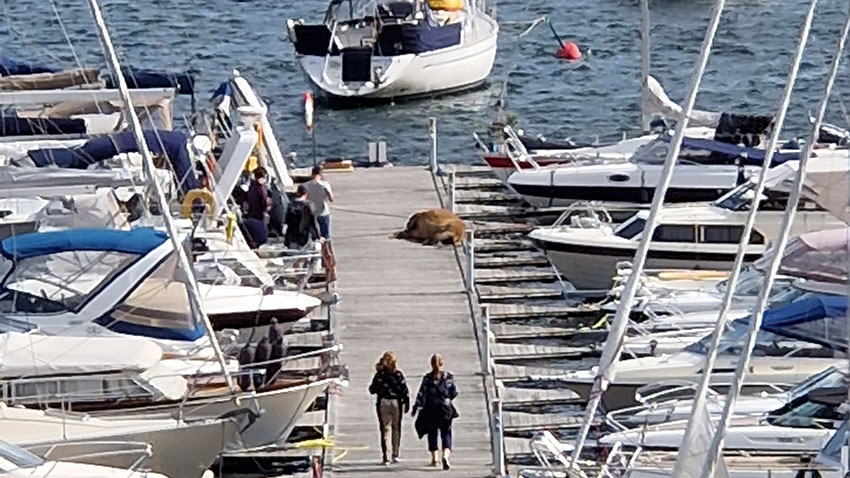Photo by Sandy Wicks, CC BY-SA 4.0, via Wikimedia Commons
In the weeks preceding my trip to Oslo, my father insisted I should go and see Freya. Our phone conversations kept returning to the unfortunate walrus, mirroring the ways in which she had ceaselessly returned to the Oslo Fjord – until it was decided by the local authorities that she should be euthanised for she was too much of a nuisance. Freya was killed in August 2022. Shortly after her death, a real-size bronze statue was commissioned to commemorate her five-year-old existence. My father wanted me to see Freya. For some reason he conceived a great passion for her tribulations: he had read all about them in the papers.
It was mid-June when I reached Oslo. On the day of my arrival – a scorching hot Monday –, my first thought went to Freya. I immediately walked to the harbor. I searched for a long time yet didn’t find her. I noticed the obvious things instead: the opera house, looking like a gigantic boat, the new Klimt museum, the people obliviously sunbathing and swimming.
I saw many sculptures during my short visit to Norway but, tantalizingly, none of them represented Freya.
The sculptures of Gustav Vigeland (1869–1943) were everywhere. Sometime in 1921, he’d donated his whole works to the city in exchange for a studio and living quarters. Throughout his whole life, Vigeland sought to immortalize in bronze and granite all the ages of human existence. I see the appeal of his works yet they do not touch me. There is something grotesque, slightly ugly about them. His sculptures of lovers embracing make me recoil. It is because they are more real than reality itself.
At the Kunstnernes Hus, there were other sculptures. Gunvor Nervold Antonsen (b. 1974) was showing her Adaptables, a collection of rough, chainsaw-carved wood figures. Although Antonsen’s sculptures are large, they reminded me of the tiny, rudimentary wooden dolls that Cornish sailors would carve for their daughters when they were out at sea, missing home. And I liked their hesitant, monumental fragility – the way they filled the whole room without imposing their presence.
I returned to the marina a few times; yet I already knew Freya would remain elusive. Maybe I walked past her without knowing it. Maybe a part of me didn’t really want to see her, petrified. It remains a mystery why she enjoyed coming near humans so much, why she never learned to stay away. Her trust – which is the naive, persistent trust of youth – amazes me. The only way mankind could accept – and understand – her was by killing her, by turning her into something immobile and containable.
I hear that thousands of visitors go and see Freya’s sculpture every month. Their sense of direction is better than mine. They know what they’re doing, where they’re going. But I do not. And I’d rather think of Freya as alive and irrepressibly disruptive.
Shortly after I came back home my father rang. His first question was about Freya: Did you manage to see her? There was anguish in his voice. He longed to know. He was annoyed at me not finding her. He said I should have asked people or checked her exact location online. I couldn’t help feeling I had let him down. To soothe him I promised I would return to Oslo one day. I had a good reason to.
Elodie A. Roy is a French-born writer living in Newcastle-upon-Tyne (UK). Her short stories and poetry have appeared in The Stinging Fly, The Oxonian Review, La Femelle du Requin, The Drouth, and RAUM. As a cultural theorist, she’s the author of two academic nonfiction books.

